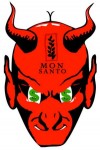J. D. Heyes – What is it about large corporations and transparency that the two seldom mix? And here’s another question: If you don’t have any morals or a soul, then is there ever a point where you think you’ve gone too far or have actually done something wrong?
 These two questions immediately came to my mind when I read Natural News editor Mike Adams’ bombshell expose this week that organic food retailer Whole Foods has aligned itself with GMO-manufacturing giant Monsanto, to endorse what amounts to little more than sham legislation that, to the uninformed observer may appear to call for the labeling of GMO foods, but which really doesn’t. And what’s more, if companies don’t comply with the legislation it won’t matter, because there won’t be any penalties leveled against them anyway.
These two questions immediately came to my mind when I read Natural News editor Mike Adams’ bombshell expose this week that organic food retailer Whole Foods has aligned itself with GMO-manufacturing giant Monsanto, to endorse what amounts to little more than sham legislation that, to the uninformed observer may appear to call for the labeling of GMO foods, but which really doesn’t. And what’s more, if companies don’t comply with the legislation it won’t matter, because there won’t be any penalties leveled against them anyway.
So, a “labeling” bill that won’t actually require GMO labeling or punish those who ignore it. Truly a piece of legislation made in today’s dysfunctional, ineffectual Washington, where the special interests actually “govern” the country via the puppets posing as lawmakers.
The (non) GMO labeling bill
Whole Foods, of course, has quickly come out to deny this, posting this partial response on the company’s Facebook page :
There is no truth to these claims. We have always advocated for more transparency in the marketplace, because we believe people have a right to know what’s in their food. That’s why we were the first (and are still the only) national grocer to set a deadline for GMO transparency in our U.S. and Canadian stores. Continue reading

 Mike Adams – While UK citizens were revolting en masse against bureaucratic rule in Europe, another cabal of prostituted lawmakers were busy plotting against American food consumers. According to
Mike Adams – While UK citizens were revolting en masse against bureaucratic rule in Europe, another cabal of prostituted lawmakers were busy plotting against American food consumers. According to